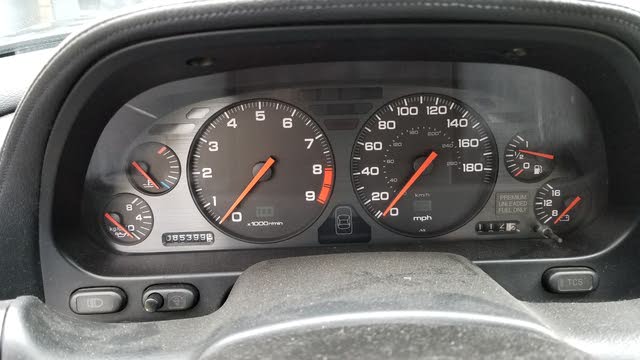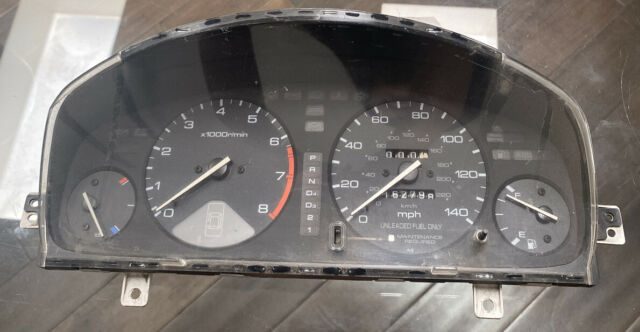All you little ones should be glad you weren't around American cars in the late 70s through the 80s, as far as stupid speedometers were concerned. The government, in it's decidedly non-infinite wisdom, decided that people would slow down if their speedometers wouldn't read so high, and in 1979 mandated an 85-mph maximum reading. The mandate only lasted two years, but the 85s continued for nearly the entire 80s decade, mainly for the cost issue discussed above. Manufacturers designed them, cars kept getting built with the same systems, so the speedometers didn't change for a very long time.
As far as government psychology goes, it was a dismal failure, as nobody slowed down. This was during America's fuel-crisis-induced 55mph national speed limit, the biggest federal override of states' rights that ever happened (IMHO.) States were free to set their own speed limits, as nothing in the Constitution reserves that right to the Federal government, but the Act defining the limit linked it to the availability of Federal highway funding; play nice or build yer own stinkin' roads! That 55mph limit was also universally ignored by drivers, and even highway patrols disliked it.
Going back to 85-mph speedos for a moment, I had a 1985 Fiero GT, the first new car I ever owned, and it indeed had the 85mph speedometer, even though it was easily capable of 120+. The dial wasn't mechanical, though, like the old-fashioned ones driven by a spinning cable from the transmission, it was run electronically. Also, it had no pins at 0 or 85, so nothing to limit the pointer. One afternoon, I found a long, empty road and decided I needed to find out the car's top end. I had a tach, so it would be easy to calculate the top speed by revs reached, just by noting revs at 60 or so.
Started the run, the speedometer ran up past the 85mph point, eventually pointing straight down, continuing around, and finally reaching the 0 mark again, at which time it just started spinning! The car's top speed was actually higher than the dial's scale could accommodate, but I did not expect what happened, I thought the needle would just reach a point and stop.

Calculating from the tach, I had reached about 125 at that point.

 Calculating from the tach, I had reached about 125 at that point.
Calculating from the tach, I had reached about 125 at that point.
![ford-mondeo-mk3-st220-3.0l-v6-original-speedo-clocks-cluster-dials-2001-2007-1166-p[ekm]1000x581[ekm].jpg](/forum/proxy.php?image=https%3A%2F%2Fwww.usedfordspares.co.uk%2Fekmps%2Fshops%2Ffordspares%2Fimages%2Fford-mondeo-mk3-st220-3.0l-v6-original-speedo-clocks-cluster-dials-2001-2007-1166-p%5Bekm%5D1000x581%5Bekm%5D.jpg&hash=a55e483ae191ad547e949b58488bf966)





